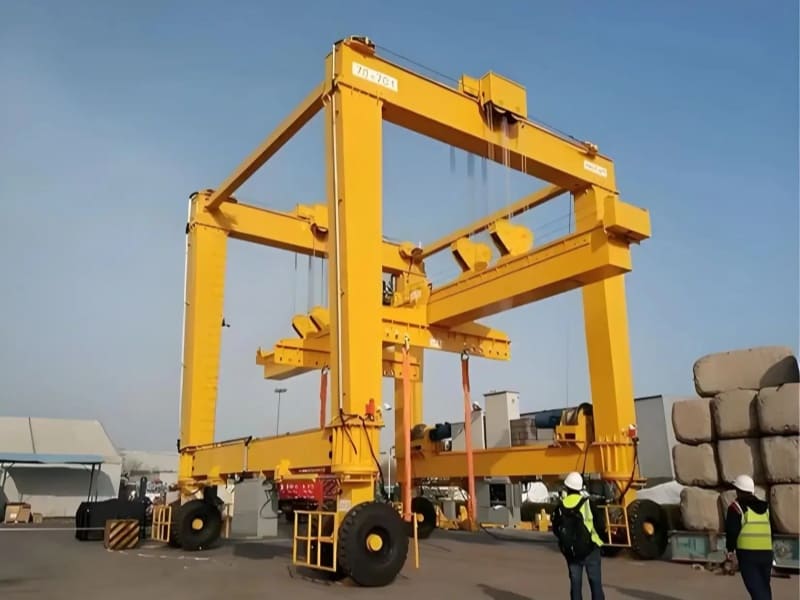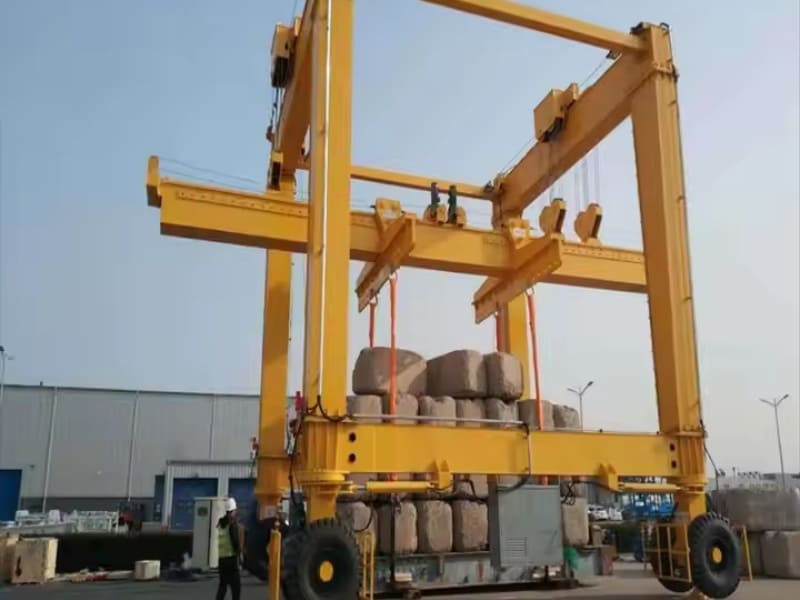Rubber tyred gantry cranes (RTG cranes) are essential equipment in container terminals, industrial yards, and large warehouses. Designed for lifting and transporting heavy loads with high flexibility, these cranes offer mobility and efficiency across a variety of environments. They are especially useful for handling stacked containers, large machinery, and other heavy-duty materials. In this article, we discuss the specifications of rubber tyred gantry cranes, the factors that influence their price, and their overall advantages for industrial operations.
♦Lifting Capacity: One of the primary factors affecting the cost of a rubber tyred gantry crane is its lifting capacity. Cranes with higher capacities require stronger structural materials, more powerful motors, and additional safety features. For example, a 50 ton gantry crane built to handle extremely heavy loads will naturally be more expensive than a smaller crane designed for lighter operations. Similarly, heavy-duty gantry cranes used in steel mills or shipping ports demand reinforced components, which increase both manufacturing and maintenance costs.
♦Span and Lifting Height: The span of a crane—the distance between its legs—and the maximum lifting height also directly affect its price. A crane with a larger span provides coverage for wider operational areas, which is crucial in extensive container yards or warehouses. Additionally, a taller lifting height enables the crane to stack containers or transport heavy goods at elevated positions. As span and height increase, so does the amount of steel, engineering complexity, and control systems required, all of which contribute to the total cost of the crane.
♦Customization Requirements: Many operations require a rubber tyred gantry crane that is tailor-made to meet specific requirements. Customization can include specialized lifting attachments, advanced control systems, or modifications to suit unusual layouts in a facility. While customization can increase the price, it ensures that the crane integrates seamlessly with the workflow, enhancing operational efficiency and productivity. A well-designed custom crane often delivers a faster return on investment by reducing downtime and increasing throughput.
♦Mobility Features: Advanced steering systems are another key factor in pricing. For instance, a crane equipped with a four-wheel steering system offers greater maneuverability compared to a two-wheel system, allowing operators to handle complex operations in confined spaces. Rubber tyred gantry cranes with high-precision mobility features are particularly valuable in areas where precise placement of containers or equipment is critical.
♦Operational Environment: The environment in which the crane operates also affects cost. Cranes working in harsh conditions, such as extreme temperatures, coastal areas with salt exposure, or sites with corrosive materials, require additional protective measures. This may include corrosion-resistant coatings, insulated electrical systems, or enhanced hydraulic components, which contribute to the overall price but ensure long-term reliability and safety.
♦Shipping and Installation: Transportation and installation costs are often overlooked but can be significant. The larger the crane, the higher the shipping fees and the more complex the installation process. Some heavy duty gantry cranes require specialized labor or engineering support during assembly, which adds to the total expenditure. Planning for logistics and installation in advance can help optimize costs and reduce delays in project timelines.
In summary, the price of a rubber tyred gantry crane is influenced by multiple factors, including lifting capacity, span, lifting height, customization, mobility features, operational environment, and installation requirements. Choosing the right crane, such as a 50 ton gantry crane or other heavy-duty options, ensures that your facility can operate safely and efficiently while handling demanding loads. Investing in a high-quality heavy duty gantry crane tailored to your operational needs not only improves productivity but also provides long-term reliability, making it a smart and cost-effective solution for modern industrial operations.









